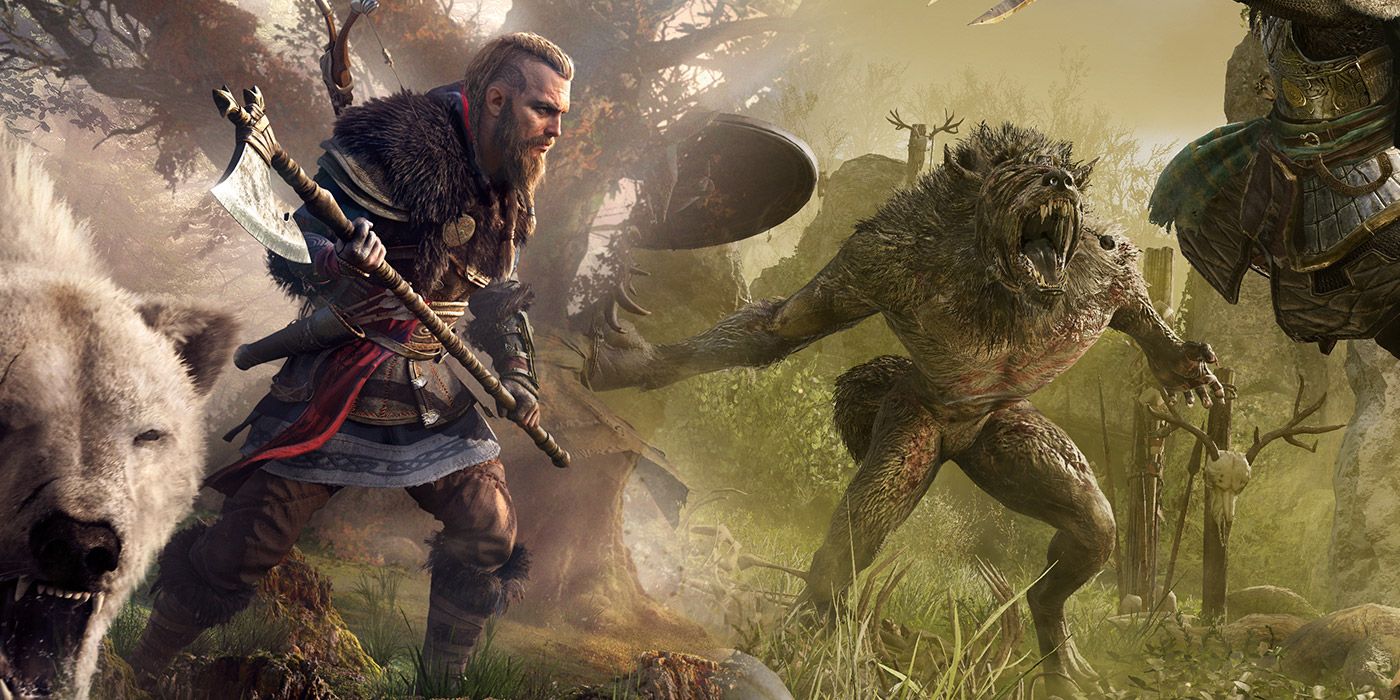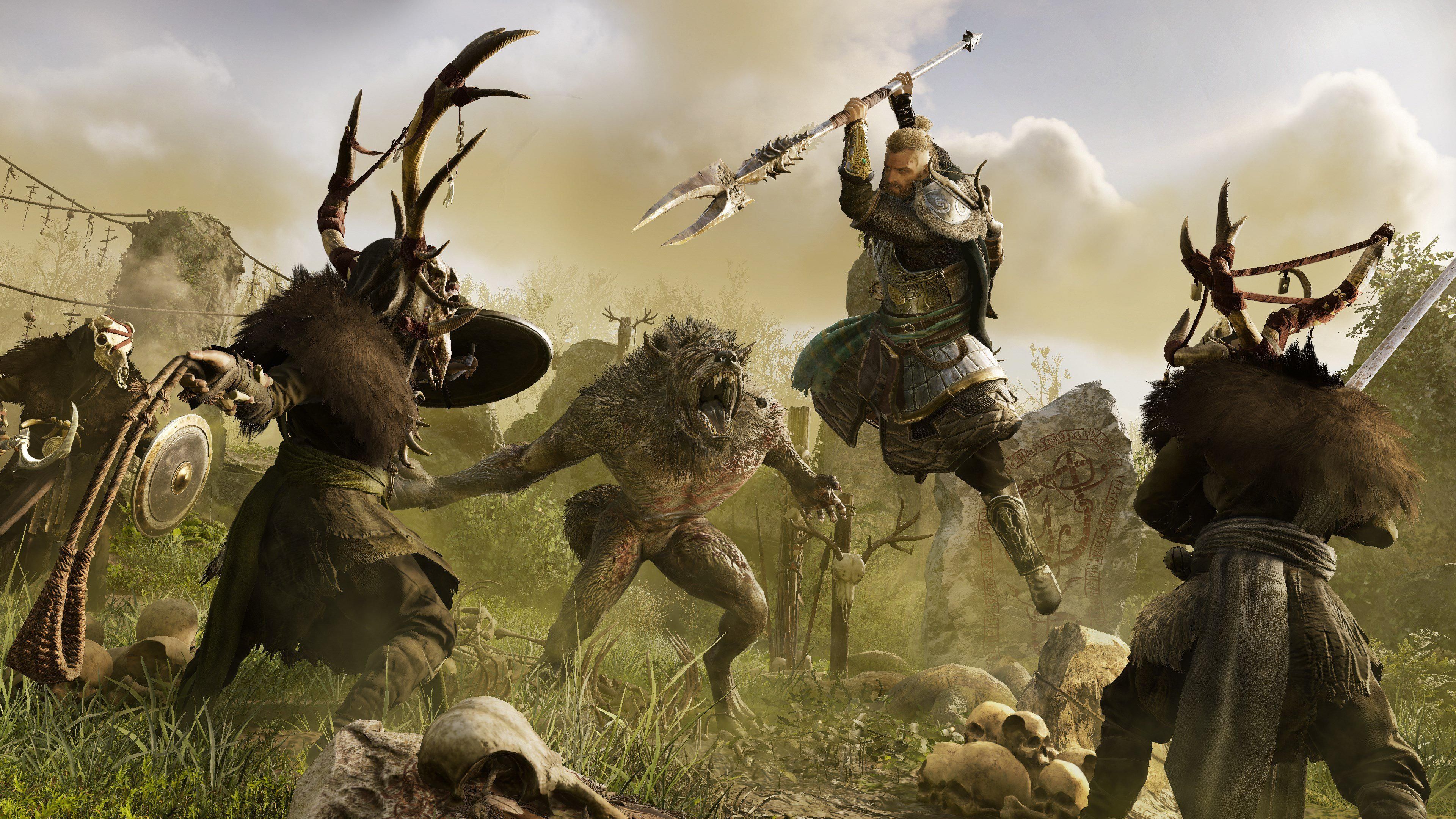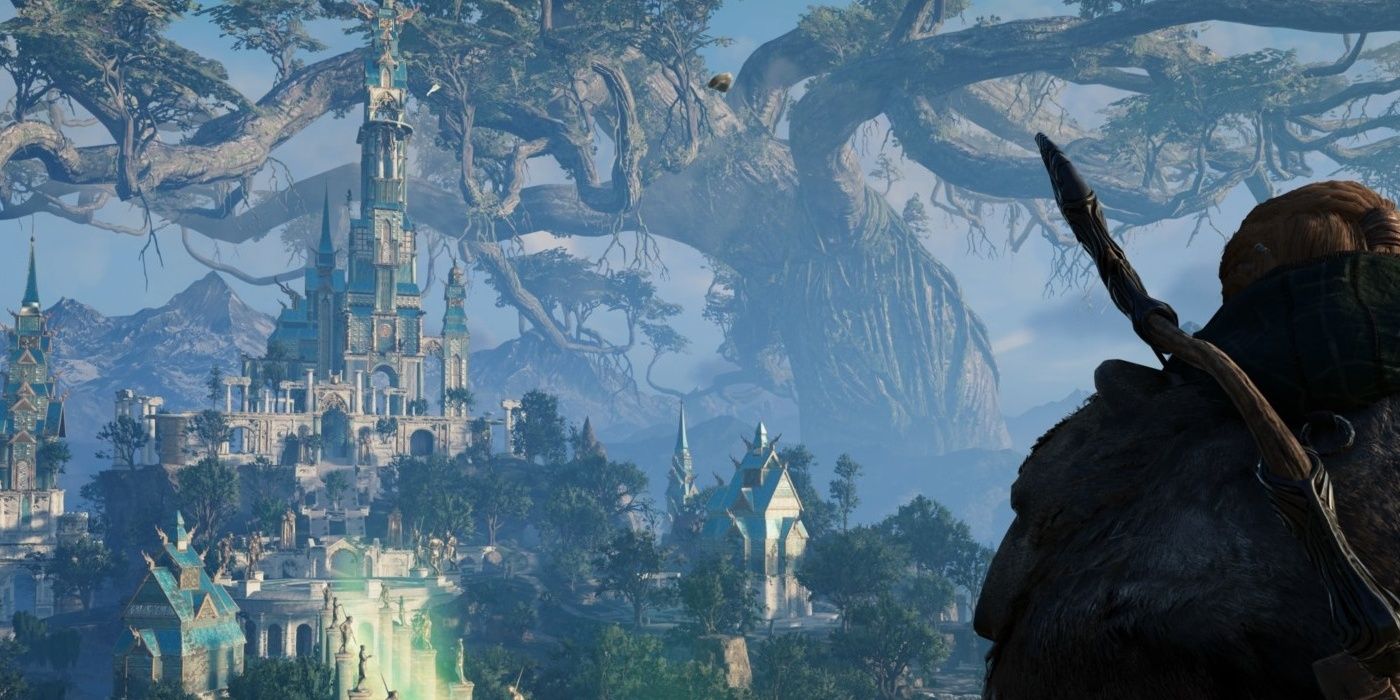
Wrath of the Druids is now available for Assassin's Creed Valhalla, providing players a new story, new mysteries, and more to resolve in Ireland. Perhaps one of the most eye-catching reveals was the inclusion of werewolves, and it certainly split many fans of the community. Many argued for the "lost" realism of the franchise, while others highlighted the ever-present and completely fictional Pieces of Eden.
Notably, however, mythology and culture cannot be removed from history. It does matter, though, how it is implemented, and when it comes to werewolves in Assassin's Creed Valhalla, it doesn't add much substance. PLEASE NOTE: THERE ARE MAJOR SPOILERS AHEAD.
RELATED: Assassin's Creed Valhalla Community Translates Native American Dialogue in Vinland
In short, players are basically induced with hallucinogens on a frequent basis to explain the existence of mythological creatures in Ireland. It's not that these creatures aren't interesting, but while Assassin's Creed Odyssey has explained its creatures in relation to the Isu, the myths presented in this Assassin's Creed Valhalla DLC go without any real explanation. For the most part, they're just there.

The first likely encounter with a werewolf in Assassin's Creed Valhalla comes when tracking down the Cursed. Players will learn they are responsible for poisoning soldiers, and they will need to defeat them to do so. For some reason as well, a Puca is involved, but they are not typically depicted as a werewolf. They are shapeshifting trickster spirits of folklore which can take on animal features, but AC Valhalla's Ciara basically surmises that it's just taken the form of a werewolf. When questioned about the Puca, Ciara basically dismisses the question by asking if Eivor's home didn't have them.
Overall, the Puca and the werewolves encountered later are revealed to be manifestations of a hallucinatory fog, where wolves look like werewolves to Eivor. There could be more to the Puca that explains why Eivor sees werewolves later on, but it's hardly touched on and they are just a new type of enemy to face. Beyond the fog, players are also induced with something after defeating all the Children of Danu and face off with Balor, another mythological creature, by drinking a potion. The responsible Druidess Deirdre hints at Woden(Odin) and Balor having a past, and Balor will call Eivor "Fjolnir" (yet another acceptable name for Odin). None of this is really explored whatsoever and doesn't add anything to the overall story or its inclusion.

This stands in contrast to how mythological elements in Assassin's Creed Valhalla's base game are treated. Transporting Eivor to Asgard/Jotun involves another hallucinogenic effect, which is problematic enough to be repeated, but this makes sense in the way it is presented. As those who have beaten the main game know, Eivor is a reincarnation of Odin but with a personal level of independence. While Eivor ultimately rejects the ways of this past life, the exploration of Asgard and Jotun is seen by Eivor through the eyes of Odin in a way that is culturally understood.
In other words, while Eivor is seeing/reliving the ancient Norse Isu preparing for the Great Catastrophe, their mind understands it as gods preparing for Ragnarok. This cultural lens at least makes sense, but as admitted in Wrath of the Druids, Eivor has never seen a Puca before. This makes the reliance on hallucinations worse because it doesn't make sense as a hallucination. There's no lens that Eivor sees through for this to make sense; it just is. Pile this on top of the fact that constant and frequent hallucinations are used to explain this away, and that's even worse. Unfortunately, it doesn't seem this reliance on hallucinations to factor in mythology is going away anytime soon.
RELATED: Assassin's Creed Valhalla's Wrath of the Druids DLC Loosely References Rogue, Origins, and More
There's been a ton of reliable rumors and leaks that a third story-based DLC was in the works for Assassin's Creed Valhalla, and while it's not official, it seems like it might as well be. First off, Ubisoft recently discussed the success of the latest franchise entry and promised it would get the most post-launch support of any Assassin's Creed game yet. While the smaller updates are likely taken into consideration there, the fact that this comes after a datamined AC Valhalla DLC 3 titled "Comet" comes about isn't likely to be sheer coincidence.
With this in mind, it's compounded by more discoveries of a new location in code: Muspelheim, or a realm of fire. It lines up perfectly with the DLC title, as well as other rumors of a dragon coming to Assassin's Creed Valhalla. Muspelheim is well-known for two things, perhaps popularized by Thor Ragnarok: The Fire Dragon Thor faces at the beginning, and Surtr who is destined to burn the whole world. Now, hopefully, Muspelheim's inclusion here will connect these elements to Eivor's background or the modern-day story of Assassin's Creed Valhalla, but regardless, it seems fated to repeat similar problems.
On the one hand, this is more likely to be explained through a cultural lens than werewolves; this has that much going for it, assuming it is indeed real. However, players will likely travel to Muspelheim in the same way they did Asgard, Jotunheim, and Balor's realm: a pseudo-magical, hallucinogenic potion. Using this to explain away everything is a simple answer, but it doesn't always seem the best: it basically means that Eivor is constantly under the influence of something.
Assuming the dragon, which seems highly likely now, also makes it in, and there's a bigger push toward more fantastical elements with potentially unequal explanation. The dragon and Surtr are hopefully treated more like the Norse gods and Jotuns, but at the same time, a dragon may be treated more like Balor. Continuing the trend thus far puts this on shaky ground, as a dragon with Isu connections or connections to the Great Catastrophe would add to the lore, but a dragon for a dragon's sake is not good.
Overall, there seems to be this big push for more fantastical battles and set pieces, and if it adds to the lore, that's great. But as many continued to be divided over the stealth elements of the franchise, the lack of a proper Assassin vs. Templar conflict, and the general direction it seems to be headed in, Muspelheim seems poised to throw more of it into the fire. It all remains to be seen, of course, but it's hard not to see this as a potential reality.
Assassin's Creed Valhalla is available now for PC, PS4, PS5, Stadia, Xbox One, and Xbox Series X.
MORE: Assassin's Creed Valhalla: Wrath of the Druids DLC Review

